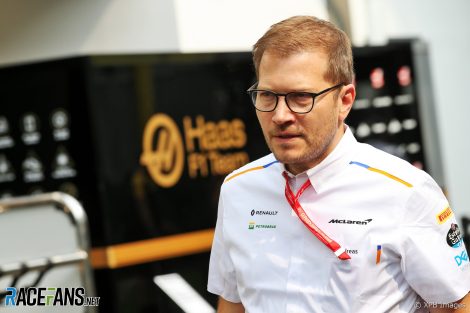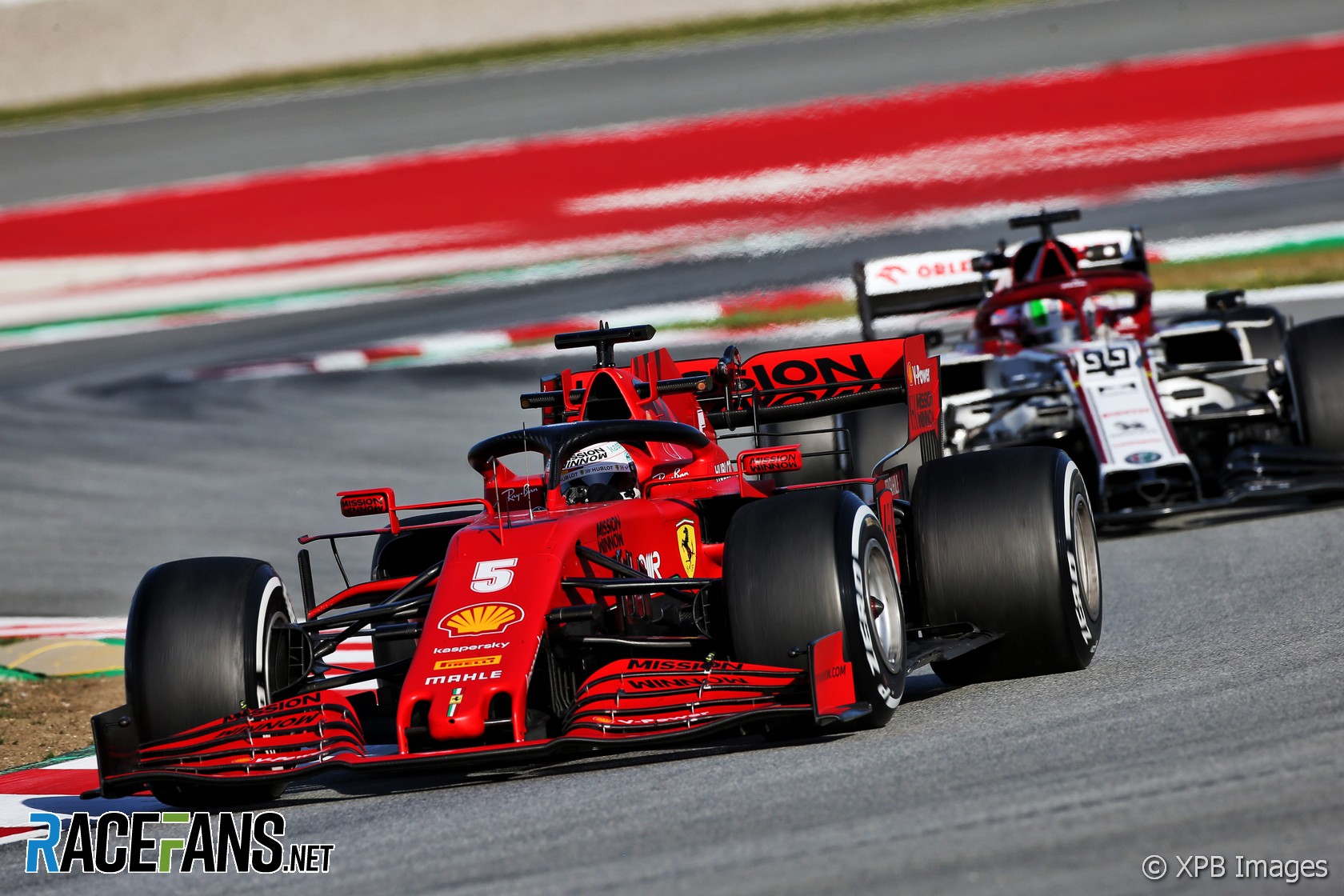As revealed here previously, the team teleconference originally called by the FIA and Formula 1 for last Friday has been rescheduled, and will now be convened today at 1pm BST.
According to sources, the reason for the delay is two-fold. First, the ‘big three’ teams had submitted lengthy written proposals to the FIA and F1 after the previous meeting. These needed extensive analysis and due consideration, which was not possible within the timeframe. Second, a Technical Working Group meeting had been held the day before, and technical delegates needed time to feed technical proposals for 2021 back to their teams.However, the primary agenda item centres on the budget cap due for introduction in 2021, and here the 10 teams are wide apart, by as much as $75m off a base figure of $175m. Ferrari and Mercedes are believed to be holding out for as much as possible – although they are allegedly prepared to move down to $150m. By contrast, McLaren is pushing for $100m, as team principal Andreas Seidl confirmed yesterday.
“I think 100 million is a good number to run Formula 1 team in the way we want to see Formula 1,” he said during a media teleconference, “because it’s important that Formula 1 is still having the fastest car on the planet [and that] Formula 1 is still seen as [being] the leading edge in terms of technology.

Contrast that with Ferrari’s position, outlined by team boss Mattia Binotto: “We are discussing a budget cap reduction but we should not forget in doing that exercise that we’ve got different structures, and different assets.
“There are teams which are constructors like Ferrari and other top teams, where we are designing, developing, homologating and producing each single component of our cars.
“Other teams are customers, buying some parts, and do not have the same structures. So when discussing a budget cap we must not forget we have different situations, and it’s important we find common ground which suits the different situations and maybe the answer is not a single budget cap equal for all the teams.”
Advert | Become a RaceFans supporter and
Although no numbers were quoted during that interview, a notional figure of $120m for ‘major’ teams and $80m for the rest were bandied about after the last meeting. But what’s the rationale for adopting this ‘two tier’ approaching instead of, say, splitting the difference between the $150m pushed for by Ferrari and Mercedes and the $100m preferred by McLaren and others, and settle for a cap of $125m – as argued for here previously?
On the one side the positions of Mercedes, Ferrari and Red Bull are understandable: they do all the ‘heavy lifting’ and thus incur development costs, which others in turn benefit from.Yet, these two teams choose (operative term) to make their products available to others in order to generate revenue and make savings. They are not forced to sell to others and could opt to purchase or source the same components elsewhere if they so wished. That said, would they still incur research and development costs were they to adhere strictly to in-house usage? Absolutely.
Thus the question is: Why should F1 tailor budget caps to suit the preferences of individual teams. McLaren and Williams, after all, each produce their entire car in-house and choose not to sell components, so why should, say, Ferrari be given the double benefit of a higher budget cap and the resultant income?
A two-tier budget cap was previously mooted by the FIA in 2009 and became the subject of a court battle brought by Ferrari (!) against the governing body. If it were introduced now, would F1 revert to a two-tier ‘class’ structure, as it did in 1987, when separate cups were awarded for the top non-turbo-powered driver and team?
Advert | Become a RaceFans supporter and
The two-tier structure was an obvious failure. It was scrapped after a single season, and today only the most fervent fans recall the ‘Jim Clark Cup’ and Colin Chapman Cup’ were won that year by Jonathan Palmer and his Tyrrell team respectively. There is no reason to expect reviving the idea over 30 years later would be less of a failure, particularly given the sport’s greater professionalism now.
How much do F1 teams spend?
In any event there is no reason for concessions to be made for voluntary parts supply as the Financial and Technical Regulations make provision for such situations under the “transferable components” clauses, which provide for “fair value” transactions.
Another proposal likely to be discussed during today’s meeting is some form of financial equivalence formula to compensate teams for research and development and other costs. This is another concept F1 unsuccessfully tried before, in 2010-12, referring to it as the Resource Restriction Agreement. The RRA also bombed.
Talk of two-tier budget caps, different classes and resource restriction agreements begs the question whether F1 has learned from its past failures at all.
Although the goal is to reach a resolution during the Thursday meeting, sources suggest this is highly unlikely, and that at one or more teleconferences will be required. One source believes that the only way a tiered budget cap would be acceptable to all is for each team to have its own cap, which they effectively have now – and look where that got F1…
The FIA and F1 need to stand firm: an affordable budget cap to fit all, or chaos. History not only repeats itself, but informs the future, and in the current environment F1’s future is very much hanging in the balance.
Go ad-free for just £1 per month
>> Find out more and sign up
2020 F1 season
- Pictures: Wrecked chassis from Grosjean’s Bahrain fireball crash to go on display
- Bottas vs Rosberg: Hamilton’s Mercedes team mates compared after 78 races each
- F1 revenues fell by $877 million in Covid-struck 2020 season
- Hamilton and Mercedes finally announce new deal for 2021 season
- F1 audience figures “strong” in 2020 despite dip in television viewers






Alianora La Canta (@alianora-la-canta)
16th April 2020, 8:25
That is going to be a big mess, if there are different caps. It effectively makes it a cap of whatever the higher number is, and forces the other teams to do whatever it is to get the higher number. In other words, it does the exact opposite of what a cost cap is supposed to achieve.
It would be better to simply stick to the $175 m everyone agreed to in the first place – or, if consensus can be achieved, reduce it to the consensus figure. (I’m impressed that after entering agreement of $175 m, all the teams are willing to consider a further drop under certain circumstances. That’s more flexibility than I dared hope would be possible).
Darran Donald
16th April 2020, 9:14
Am i missing something or why not have a set budget but teams selling parts to other teams can spend the money they get back? Say Ferrari sell engines to Haas and Sauber who pay £5m a MGU then Ferrari get that £20m back into there budget.
BasCB (@bascb)
16th April 2020, 9:33
As far as I understand the cap already has something like that in place – it uses sort of “benchmarked” realistic cost for such parts for use of calculation of appropriating budgets Darren
drmouse (@drmouse)
16th April 2020, 11:19
This.
If a team develops a part and then sells it to other teams, just credit that back. Cost control certain parts, like PUs, but other than that it evens itself out.
anon
16th April 2020, 12:53
@drmouse those cost controls do seem to be causing some of the problems though, as there have been times when the price controls have put the cost of the item below the cost of production. In that situation, even if the manufacturer were allowed to claim back credits for the supply of the item, if it were done on the cost controlled price, it would be a net negative balance overall.
John H (@john-h)
16th April 2020, 9:49
Policing a budget cap will not work. Why can’t McLaren automotive just develop something that then makes it to the F1 car?
Can’t the wealth just be kept inside F1, and a much fairer distribution of income be agreed on? I still don’t understand why taxing the rich more doesn’t work just like in any societal system, Scandinavia as opposed to the US for example.
Aussie Rod (@aussierod)
16th April 2020, 10:31
Anything other than a standard cap across all teams would be a farce and a potentially fatal mistake for F1.
The current financial structure of the 10 teams is imbalanced, unfair and simply flawed. The cost cap should be designed to fix this, not reflect it !
Stephen Crowsen (@drycrust)
16th April 2020, 12:39
When you think about it, it’s quite extraordinary to think F1 could be relegated to the pages of history by the end of this year if teams don’t get this right. Yet getting it right seems to be less important than some desire for self-aggrandisement in a less than credible racing series. Hopefully the desire to race in a credible racing series prevails.
Velocityboy (@velocityboy)
16th April 2020, 14:36
I think that trying to have a single budget cap for all teams is folly. F1 is not like other sports where all participants are primarily using the same business model. F1 has manufacturers, constructors and customers all of whom go about the business of F1 in completely different manners and trying to governed them all by a single budget cap ignores the things that make them different from one another and is a proposition doomed to failure. There are smart people involved with this and I think trying to have a single budget cap is simply lazy.
George (@feral)
16th April 2020, 15:08
In my opinion budget cap is secondary to achieving the survival of a healthy F1. The only way to ensure teams stay the distance is to make the share of the pot is more equal. It is no good limiting the budget to 175 m if you are a team struggling to keep afloat at 70m. It will probably never happen as the top cats will not agree to a reduction of their disproportionate share but it could well be the finish for f! as we know it.
Eric Rocheteau
16th April 2020, 15:17
Why not take an idea from US major league baseball: a luxury tax.
Set a cost cap at (for example) $125 M; anyone who exceeds that cap would see their Formula One income reduced by that amount (or even a multiplier thereof), which would then be distributed equitably to all the other teams that adhered to the cap. If you choose to spend more, you are also giving up on income, so it hurts three ways: less income, more costs, strengthen your competition (by the additional income they receive).
Esploratore (@esploratore)
16th April 2020, 23:58
Seems like a good idea.
Roberto Giacometti
16th April 2020, 23:12
Since when do Williams and McLaren produce their entire car in house?
They buy engines , sorry PU’s !!